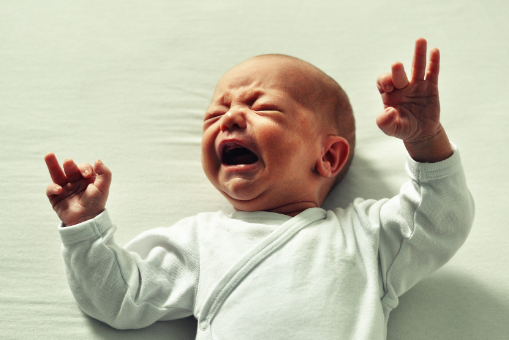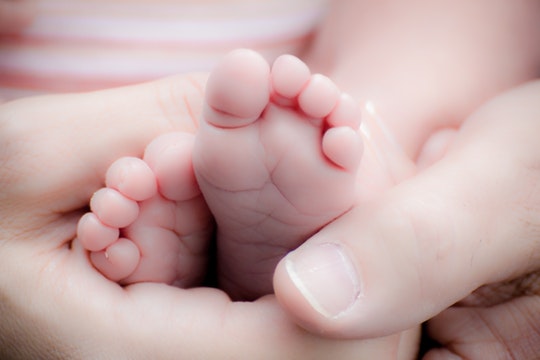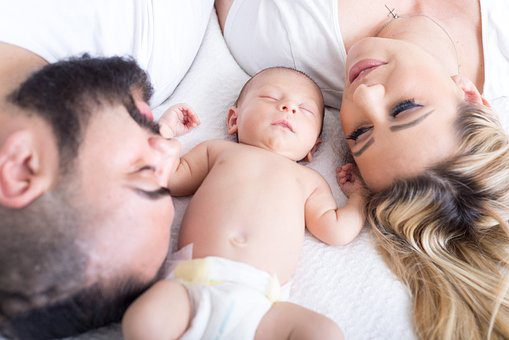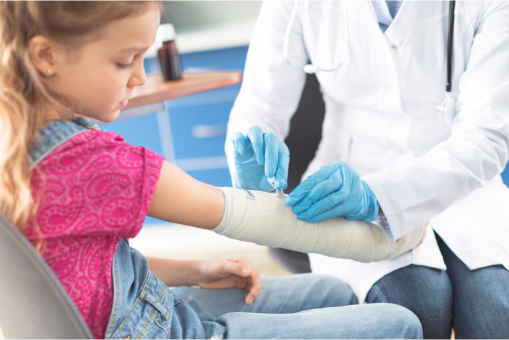Human growth and development, from birth to adulthood, is predicated on heritage and the environment in which the process of growing up and maturation takes place. Supposing that the hereditary part is immutable, the influence of the environment, which shapes the development from infancy to adulthood, appears especially interesting. Particularly important in this respect is the earliest period in which changes appear most rapidly, and vulnerability is at its peak. This is the period of total dependency on others (parents), in which defence mechanisms against harmful agents are poorly developed and inefficient. Severe disorders at this age therefore have a profound influence on future development.
Infancy lasts from birth until the end of the first year. During the first four weeks, the term newborn infant is typically used.
From birth until age 3, the brain undergoes extremely rapid growth and development. In this period, it reaches 80% of its adult volume. External stimuli, combined with heritage, cause brain cells to multiply, move to their final destinations, assume their task and interconnect into a thick network of brain pathways. The visible reflection of these events are the changes we observe in the infant’s gross and fine motor skills, communication skills, emotional development, behaviour, learning, memory and sleeping. We will discuss gross motor skills further in the text below, but bear in mind that there is always a close link between all elements of development. Motor stimulation therefore affects other brain functions.
There are some general rules guiding motor development, but due to the large variety in normal patterns, evaluation should be left to the experts. Gross motor skills depend on brain and muscle strength development. During the first year, the infant first assumes a lying position, unable to raise their body from the surface, able only to turn their head to the side. They gradually develop the ability to raise the head from the surface. The infant is then able to raise the shoulders by pushing up on the under arms and gradually, in the following months, on the palms. The body gradually rotates into a side position until it is able to perform a full turn: from the stomach onto the back and vice versa. While lying on the back, the infant raises the head closer to the chest, trying to sit up. While lying on the stomach, the infant gradually begins to raise the pelvis by drawing the knees in and pushing up into a position on all fours. This position is extremely important because it presents the first step towards crawling and sitting by moving the body backwards with the hands. It should be noted that in around 20% of cases, normal infant development does not include crawling. These infants follow a different pattern of moving across a surface: with one leg stretched out in front of the body and the other behind it, the infant uses the arms to move quickly along the surface. Furthermore, they gradually move into a sitting position on the lower legs and then a kneeling position. By holding on to the edge of the bed or a parent, the infant gradually steps forward on one leg and moves up into a standing position. At that time, the infant masters the skill of moving from a lying to a sitting position by turning onto the side and then raising themselves up with the “lower” arm.
The main force that guides this order of development is the desire to move and sit up straight. It is extremely important to respect this natural order and not “skip” individual stages. Sometimes, wanting to teach our child how to stand as soon as possible, we start pulling him by the arms. The infant will quickly learn to push against a surface with their feet, stand on their feet, and merrily hop around. A similar thing happens when you hold the child in your arms while sitting down: while holding on to your body, the child will start hopping merrily in your lap. In this way, we teach the child the wrong way to reach an upright position and they no longer have the inclination (or reason) to learn how to crawl or kneel. Ultimately, healthy children do learn how to stand up properly and independently, but at a later stage. Furthermore, their motor skills are somewhat less developed (skilfulness in activities performed on the floor, ability to break one’s fall). Respecting the natural order of development and following the recommendations of experts are especially important for children with motor skill impairments. The previously listed reasons also apply when arguing against baby walkers. Not only are baby walkers a considerable source of danger and potential injury to the child, but they do not allow the child to control their leg movement with their eyes, which is necessary for developing coordination. Until the child is able to get up independently, keep all the games on the surface. This can be the floor or a larger bed, but hard surfaces are preferred. In an upright position, some children try to stand on tiptoe, in which case make sure to provide them with firm, deep shoes that will enable them to press the whole foot against the surface. Children who rely on the entire surface of their feet can be barefoot or wear non-skid socks. Since infant feet still contain fatty “cushions”, there is no need for shoes with insoles which provide support along the entire foot. Only after 2 or 3 years, if the foot is significantly turned inwards (the ankle joint is “caving in”) will experts determine the appropriate type of insole (usually those that are thicker under the inner part of the heel and provide support for the longitudinal arch of the foot). This brings the foot back into an upright position. Support for the transversal arch (area of the foot just before the toes) is typically not set until school age.
During the development process, the child continues to adopt new skills, is able to stand up from a squatting position without using the hands, starts running (first with outstretched arms, trying to maintain balance, later coordinating arm and body movements), skilfully slides off the bed, walks up the stairs (first one step at a time with both feet, and then one foot at a time), and throws and catches a ball. Bearing in mind safety regulations, the child can play on age-appropriate equipment and play structures (playgrounds in parks, playrooms). Unfortunately, individual pieces of equipment in play structures are rarely age-labelled, so caution is necessary! In principle, children need a lot of space, movement and different options for learning and practising their motor skills. One can often see that younger schoolchildren who spend most of their time at school or at home studying, watching TV or playing video games experience significant motor skill impairments, such as a lack of strength and movement coordination. Excessive urbanisation of city centres in past decades has significantly reduced space available for playing and moving around freely. On the other hand, the modern way of life and the excessive workload of parents do not enable them to put enough effort into making sure their children take part in physical activities. One consequence of these changes is the striking increase in child obesity. In addition to increasing the risk of numerous illnesses, obesity significantly limits the possibility of participating in physical activities, which leads to further weight gain and slows down the development of motor skills. Obese children need to be included in specialised physical activity programmes conducted by kinesiologists.
Early participation in expert physical activity programmes (available in some kindergartens) and sports clubs achieve excellent results in promoting children’s physical and mental health.
A few words on the development of fine motor skills
Fine motor skills are a group of actions that involve small muscle groups and demand good coordination between individual brain cell groups. Percentage-wise, the largest number of cortex cells related to motor skills are dedicated to finger movement. Therefore, as the infant brain develops, it is possible to notice changes in infant development, such as the ability to grab an object with both hands, then one hand, bring an object towards the mouth, move it from one hand to the other, grab objects with the tip of the thumb and index finger, press buttons on the mobile phone or remote control, turn the pages of a picturebook, twist and turn things, grab a pencil (first with the whole fist, then in the correct manner), close a zipper (“fly”), button and unbutton clothes, tie shoelaces, colour and write nicely and tidily, etc. Some children may appear clumsy, often drop objects and their movements do not seem very precise. Due to an impairment of fine motor skills, the child may avoid certain activities: e.g. they do not enjoy drawing or writing, cannot colour or write nicely and tidily, write slowly, etc. These signs are often not identified in time, as the child is simply deemed not talented for certain activities, which are then abandoned. Upon entering school, where the speed and tidiness of writing are standardised, such a child may face problems. It is therefore important to pay attention to fine motor skills and alert the doctor if there is any doubt, so that treatment may commence on time.
In conclusion, movement is as important for our health as food, water and air. By being physically active, parents will improve their own health, prevent a number of diseases and promote good habits in their children. The World Health Organization recommends that a minimum of one hour a day of physical activities be ensured for children.






